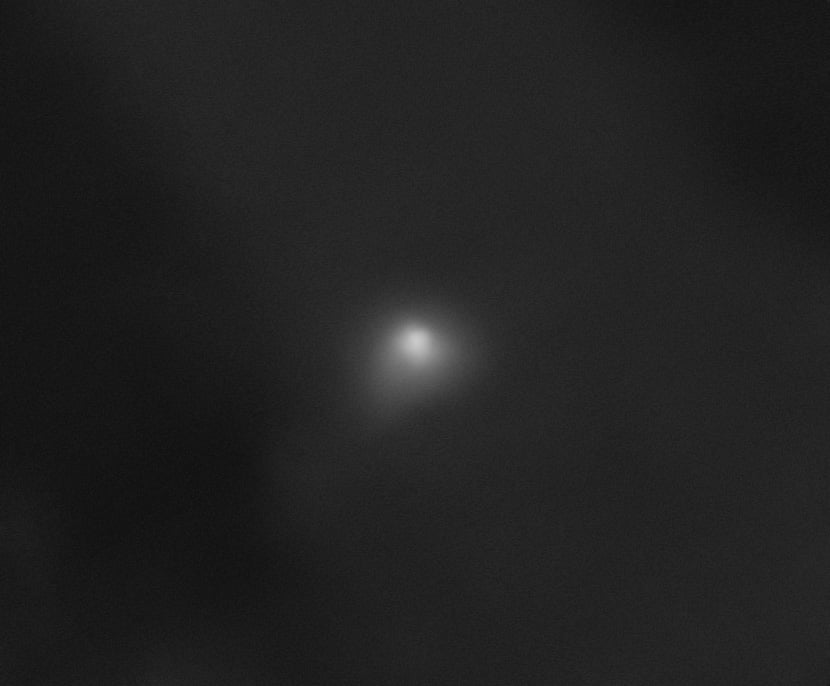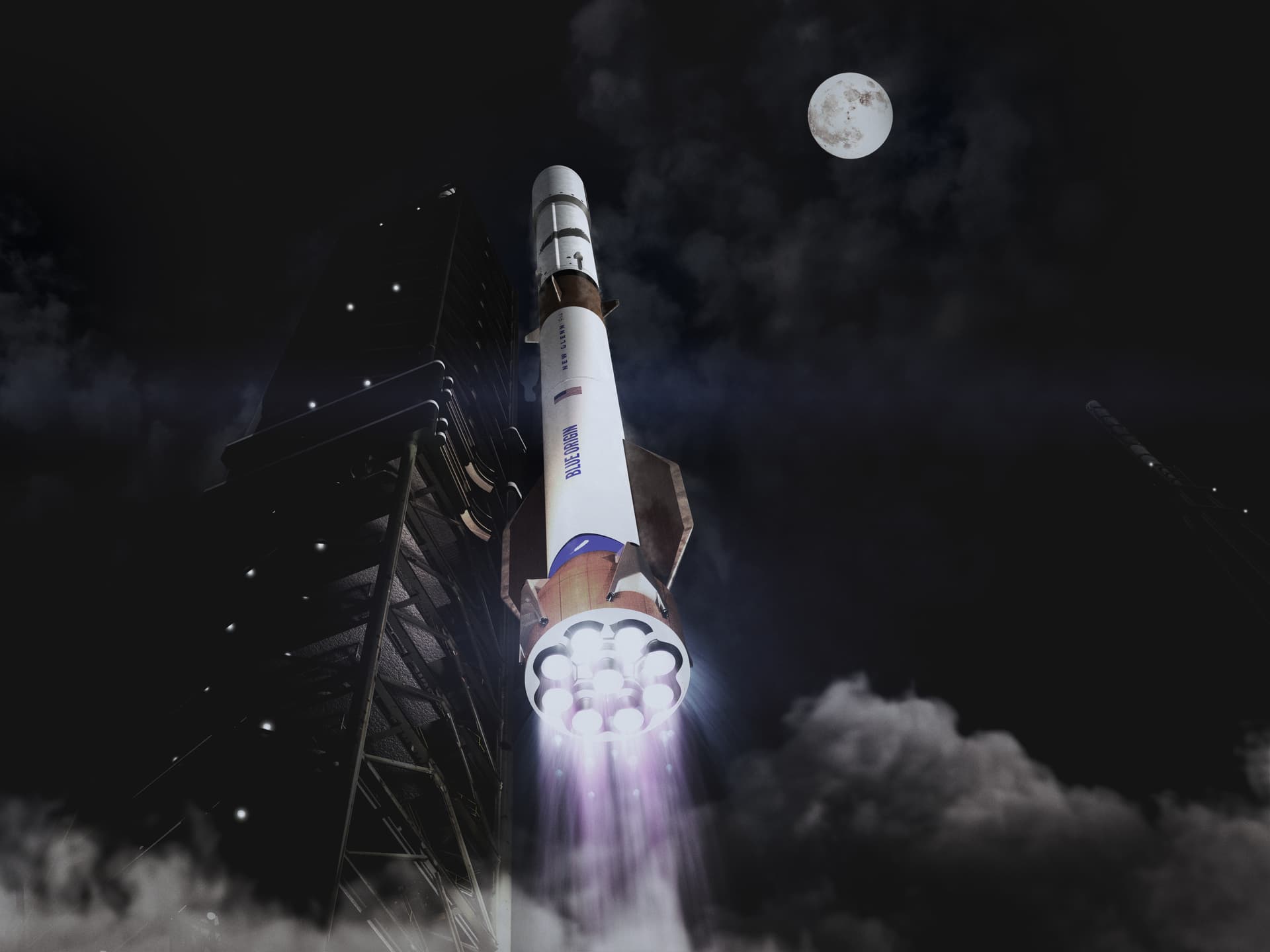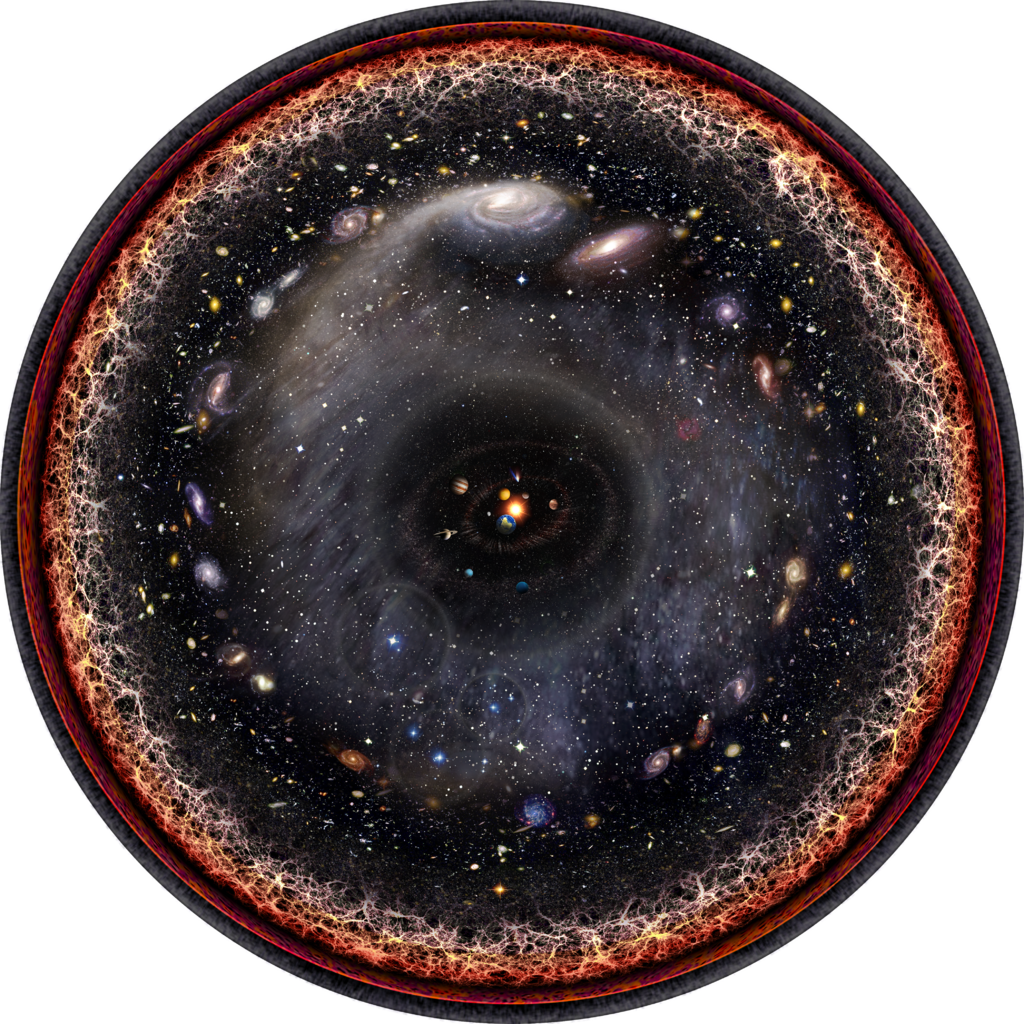Web
Please enter a search for web results.
News
The Moss That Survived Nine Months in Space
 1+ hour, 24+ min ago (191+ words) It seems the humble moss is much more resilient than we first thought. Researchers have sent some samples into space and it survived for nine months (Credit : IvoShandor) Space is spectacularly hostile to life. The vacuum would make human blood boil. Cosmic radiation tears through unprotected cells. Temperatures swing wildly between extremes. Unfiltered solar ultraviolet light breaks down organic molecules with ruthless efficiency. Most organisms, humans very much included, would die within seconds of exposure. The International Space Station is often used to study plants and growth as pictured here (Credit : NASA) That protective advantage comes from the spore's encasing structure, which acts as both physical barrier and chemical shield, absorbing harmful radiation before it reaches the vulnerable genetic material inside. This adaptation likely enabled bryophytes, the plant group including mosses, to colonise land 500 million years ago and weather subsequent…...
1+ hour, 24+ min ago (191+ words) It seems the humble moss is much more resilient than we first thought. Researchers have sent some samples into space and it survived for nine months (Credit : IvoShandor) Space is spectacularly hostile to life. The vacuum would make human blood boil. Cosmic radiation tears through unprotected cells. Temperatures swing wildly between extremes. Unfiltered solar ultraviolet light breaks down organic molecules with ruthless efficiency. Most organisms, humans very much included, would die within seconds of exposure. The International Space Station is often used to study plants and growth as pictured here (Credit : NASA) That protective advantage comes from the spore's encasing structure, which acts as both physical barrier and chemical shield, absorbing harmful radiation before it reaches the vulnerable genetic material inside. This adaptation likely enabled bryophytes, the plant group including mosses, to colonise land 500 million years ago and weather subsequent…...
Two Years of Listening to the Universe's Most Violent Events
 1+ hour, 40+ min ago (202+ words) Part of the KAGRA gravitational-wave detector during construction (Credit : Christopher Berry) Representation of the data corresponding to the gravitational signal GW250114 and its reconstruction. The top panels represent the data time series in both detectors, with the reconstructed waveform superimposed. The bottom panels show a time-frequency representation of the data (Credit : LVK collaboration) The campaign also detected GW231123, the most massive black hole merger observed to date. The collision produced a final black hole exceeding 225 times our Sun's mass, an extreme result that challenges current models of how stellar evolution creates black holes. Hundreds of additional events from O4 await detailed analysis, with researchers promising a comprehensive catalogue in coming months. Meanwhile, the three detectors prepare for technological upgrades over the next few years. The improvements will be implemented in stages, with a new observation campaign launching in late summer or early autumn…...
1+ hour, 40+ min ago (202+ words) Part of the KAGRA gravitational-wave detector during construction (Credit : Christopher Berry) Representation of the data corresponding to the gravitational signal GW250114 and its reconstruction. The top panels represent the data time series in both detectors, with the reconstructed waveform superimposed. The bottom panels show a time-frequency representation of the data (Credit : LVK collaboration) The campaign also detected GW231123, the most massive black hole merger observed to date. The collision produced a final black hole exceeding 225 times our Sun's mass, an extreme result that challenges current models of how stellar evolution creates black holes. Hundreds of additional events from O4 await detailed analysis, with researchers promising a comprehensive catalogue in coming months. Meanwhile, the three detectors prepare for technological upgrades over the next few years. The improvements will be implemented in stages, with a new observation campaign launching in late summer or early autumn…...
Finding 40,000 Asteroids Before They Find Us
 1+ hour, 53+ min ago (185+ words) The number 40,000 might not sound particularly dramatic, but it represents humanity's growing catalogue of near Earth asteroids, rocky remnants from the Solar System's violent birth that cross paths with our planet's orbit. We've come a long way since 1898, when astronomers discovered the first of these wanderers, an asteroid called Eros. Asteroid Eros captured by the NEAR spacecraft (Credit : NASA/JPL/JHUAPL) The acceleration shows no signs of slowing yet. New facilities like Chile's Vera C. Rubin Observatory, which opened this year, will discover tens of thousands more asteroids despite not being exclusively dedicated to asteroid hunting. Meanwhile, ESA's Flyeye telescopes use wide, almost insect like views of the sky to catch objects that slip past current surveys. Artists impression of the completed ESA NEOSTEL flyeye telescope (Credit : ESA/A. Baker) Today's focus has shifted to mid sized asteroids between 100 and 300 metres wide....
1+ hour, 53+ min ago (185+ words) The number 40,000 might not sound particularly dramatic, but it represents humanity's growing catalogue of near Earth asteroids, rocky remnants from the Solar System's violent birth that cross paths with our planet's orbit. We've come a long way since 1898, when astronomers discovered the first of these wanderers, an asteroid called Eros. Asteroid Eros captured by the NEAR spacecraft (Credit : NASA/JPL/JHUAPL) The acceleration shows no signs of slowing yet. New facilities like Chile's Vera C. Rubin Observatory, which opened this year, will discover tens of thousands more asteroids despite not being exclusively dedicated to asteroid hunting. Meanwhile, ESA's Flyeye telescopes use wide, almost insect like views of the sky to catch objects that slip past current surveys. Artists impression of the completed ESA NEOSTEL flyeye telescope (Credit : ESA/A. Baker) Today's focus has shifted to mid sized asteroids between 100 and 300 metres wide....
The Box vs The Bulldozer: The Story of Two Space Gas Stations
23+ hour, 2+ min ago (829+ words) [MOXIE being loaded onto the Perseverance rover. Credit - NASA / JPL-Caltech]Using in-situ propellant has been a central pillar of the plan to explore much of the solar system. The logic is simple - the less mass (especially in the form of propellant) we have to take out of Earth's gravity well, the less expensive, and therefore more plausible, the missions requiring that propellant will be. However, a new paper from Donald Rapp, the a former Division Chief Technologist at NASA's JPL and a Co-Investigator of the successful MOXIE project on Mars, argues that, despite the allure of creating our own fuel on the Moon, it might not be worth it to develop the systems to do so. Mars, on the other hand, is a different story. Using in-situ propellant has been a central pillar of the plan to explore much of…...
NASA Finally Releases Images of 3I/ATLAS Taken by Its Missions at Mars
 1+ day, 9+ hour ago (671+ words) [On a largely black background, interstellar comet 3I/ATLAS appears as a white smudge with a semicircular shape at its core. Credit: NASA/JPL-Caltech/University of Arizona]Two orbiters and a rover captured images of the interstellar object " from the closest location any of the agency's spacecraft may get " that could reveal new details. The MRO took its visible light images of 3I/ATLAS (shown at top) on Oct. 2nd using its High-Resolution Imaging Science Experiment (HiRISE) camera, when the interstellar comet was about 0.2 astronomical units (AUs) distant. These images were among the closest views that any NASA spacecraft or Earth-based telescopes are expected to obtain of 3I/ATLAS and will allow scientists to get a better estimate of the comet's size. Ordinarily, this camera observes well-lit features on the Martian surface, but the orbiter rotated to obtain a better view of the celestial…...
1+ day, 9+ hour ago (671+ words) [On a largely black background, interstellar comet 3I/ATLAS appears as a white smudge with a semicircular shape at its core. Credit: NASA/JPL-Caltech/University of Arizona]Two orbiters and a rover captured images of the interstellar object " from the closest location any of the agency's spacecraft may get " that could reveal new details. The MRO took its visible light images of 3I/ATLAS (shown at top) on Oct. 2nd using its High-Resolution Imaging Science Experiment (HiRISE) camera, when the interstellar comet was about 0.2 astronomical units (AUs) distant. These images were among the closest views that any NASA spacecraft or Earth-based telescopes are expected to obtain of 3I/ATLAS and will allow scientists to get a better estimate of the comet's size. Ordinarily, this camera observes well-lit features on the Martian surface, but the orbiter rotated to obtain a better view of the celestial…...
Blue Origin to Build a "Super Heavy" Rocket to Compete with Starship
 1+ day, 12+ hour ago (652+ words) [Artist]Blue Origin announced a series of upgrades to New Glenn designed to increase payload performance and launch cadence, while enhancing reliability. The enhancements span propulsion, structures, avionics, reusability, and recovery operations, and will be phased into upcoming New Glenn missions beginning with NG-3. Blue Origin just achieved another impressive milestone with its new heavy-launch vehicle, the partially reusable New Glenn rocket. On Thursday, Nov. 13th, during what was only the second launch of the New Glenn (NG-2), Blue Origin launched a NASA payload destined for Mars. This was the ESCAPADE (Escape and Plasma Acceleration Dynamics Explorers) mission, a pair of twin satellites that will study how solar wind interacts with Mars" magnetic environment and how this interaction drives atmospheric escape. Unlike the inaugural flight, this launch also saw the company successfully retrieve the rocket's first stage, fulfilling Blue Origin's promise…...
1+ day, 12+ hour ago (652+ words) [Artist]Blue Origin announced a series of upgrades to New Glenn designed to increase payload performance and launch cadence, while enhancing reliability. The enhancements span propulsion, structures, avionics, reusability, and recovery operations, and will be phased into upcoming New Glenn missions beginning with NG-3. Blue Origin just achieved another impressive milestone with its new heavy-launch vehicle, the partially reusable New Glenn rocket. On Thursday, Nov. 13th, during what was only the second launch of the New Glenn (NG-2), Blue Origin launched a NASA payload destined for Mars. This was the ESCAPADE (Escape and Plasma Acceleration Dynamics Explorers) mission, a pair of twin satellites that will study how solar wind interacts with Mars" magnetic environment and how this interaction drives atmospheric escape. Unlike the inaugural flight, this launch also saw the company successfully retrieve the rocket's first stage, fulfilling Blue Origin's promise…...
New Research Suggest Earth and Theia were Neighbors Before They Collided
 2+ day, 8+ hour ago (920+ words) [Artist's impression of the collision between the early Earth and Theia. Since Theia originated in the inner Solar System. Credit & ": MPS/Mark A. Garlick]About 4.5 billion years ago, the most momentous event in the history of Earth occurred: a huge celestial body called Theia collided with the young Earth. How the collision unfolded and what exactly happened afterward has not been conclusively clarified. What is certain, however, is that the size, composition, and orbit of Earth changed as a result'and that the impact marked the birth of our constant companion in space, the moon. According to the leading theory of how the Earth-Moon system formed (the Giant Impact Hypothesis), a Mars-sized object (named Theia) collided with a proto-Earth 4.5 billion years ago. This turned both objects into molten lava, which eventually coalesced and cooled to form the Earth and Moon. Over time,…...
2+ day, 8+ hour ago (920+ words) [Artist's impression of the collision between the early Earth and Theia. Since Theia originated in the inner Solar System. Credit & ": MPS/Mark A. Garlick]About 4.5 billion years ago, the most momentous event in the history of Earth occurred: a huge celestial body called Theia collided with the young Earth. How the collision unfolded and what exactly happened afterward has not been conclusively clarified. What is certain, however, is that the size, composition, and orbit of Earth changed as a result'and that the impact marked the birth of our constant companion in space, the moon. According to the leading theory of how the Earth-Moon system formed (the Giant Impact Hypothesis), a Mars-sized object (named Theia) collided with a proto-Earth 4.5 billion years ago. This turned both objects into molten lava, which eventually coalesced and cooled to form the Earth and Moon. Over time,…...
 2+ day, 11+ hour ago (797+ words) The surface of the Earth is finite. We can measure it. If it was expanding, then its size would grow with time. And once again, good ol" Earth helps us understand what the universe might be doing beyond our observable horizon. Our best assumption of what goes on beyond the horizon is that there"s just more stuff. More stars, more galaxies, more AI-generated cat videos. Just like we assume that beyond our horizon on the Earth there"s more'Earth. So how big is the universe? Like, in total, even beyond what we can see? Well the truth is we"ll likely never know. The observable limit is just that " a limit. It"s not just a limit to what we can see. It"s a limit to what we can know. There"s a total amount of information contained…...
2+ day, 11+ hour ago (797+ words) The surface of the Earth is finite. We can measure it. If it was expanding, then its size would grow with time. And once again, good ol" Earth helps us understand what the universe might be doing beyond our observable horizon. Our best assumption of what goes on beyond the horizon is that there"s just more stuff. More stars, more galaxies, more AI-generated cat videos. Just like we assume that beyond our horizon on the Earth there"s more'Earth. So how big is the universe? Like, in total, even beyond what we can see? Well the truth is we"ll likely never know. The observable limit is just that " a limit. It"s not just a limit to what we can see. It"s a limit to what we can know. There"s a total amount of information contained…...
How a Detergent Ingredient Unlocked the Potential of Nanotubes
 2+ day, 22+ hour ago (734+ words) [Image from the paper showing the BNNT material and its use case. Credit - Y.K. Kim et al.]Material science plays a critical role in space exploration. So many of the challenges facing both crewed and non-crewed missions come down to factors like weight, thermal and radiation tolerance, and overall material stability. The results of a new study from Young-Kyeong Kim of the Korea Institute of Science and Technology and their colleagues should therefore be exciting for those material scientists who focus on radiation protection. After decades of trying, the authors were able to create a fully complete "sheet" of Boron Nitride Nanotubes (BNNTs). Material science plays a critical role in space exploration. So many of the challenges facing both crewed and non-crewed missions come down to factors like weight, thermal and radiation tolerance, and overall material stability. The results of a…...
2+ day, 22+ hour ago (734+ words) [Image from the paper showing the BNNT material and its use case. Credit - Y.K. Kim et al.]Material science plays a critical role in space exploration. So many of the challenges facing both crewed and non-crewed missions come down to factors like weight, thermal and radiation tolerance, and overall material stability. The results of a new study from Young-Kyeong Kim of the Korea Institute of Science and Technology and their colleagues should therefore be exciting for those material scientists who focus on radiation protection. After decades of trying, the authors were able to create a fully complete "sheet" of Boron Nitride Nanotubes (BNNTs). Material science plays a critical role in space exploration. So many of the challenges facing both crewed and non-crewed missions come down to factors like weight, thermal and radiation tolerance, and overall material stability. The results of a…...
Ancient Underground Water Suggests Mars May Have Been Habitable Longer than Previously Thought
 3+ day, 10+ hour ago (598+ words) [NASA]Scientists from New York University Abu Dhabi (NYUAD) have uncovered new evidence that water once flowed beneath the surface of Mars, revealing that the planet may have remained habitable for life much longer than previously thought. It is a scientific consensus that water once flowed on Mars, that it had a denser atmosphere, meaning that it was once habitable. Unfortunately, roughly 4.2 to 3.7 billion years ago, Mars' rivers, lake, and global ocean began to disappear as solar wind slowly stripped its atmosphere away. For scientists, the question of how long it remained habitable has been the subject of ongoing inquiry. Whereas some scientists maintain that Mars ceased being habitable billions of years ago, recent research suggests that it experienced periods of habitability that lasted for eons. This includes recent findings by NASA's Curiosity rover, which has been exploring the Gale…...
3+ day, 10+ hour ago (598+ words) [NASA]Scientists from New York University Abu Dhabi (NYUAD) have uncovered new evidence that water once flowed beneath the surface of Mars, revealing that the planet may have remained habitable for life much longer than previously thought. It is a scientific consensus that water once flowed on Mars, that it had a denser atmosphere, meaning that it was once habitable. Unfortunately, roughly 4.2 to 3.7 billion years ago, Mars' rivers, lake, and global ocean began to disappear as solar wind slowly stripped its atmosphere away. For scientists, the question of how long it remained habitable has been the subject of ongoing inquiry. Whereas some scientists maintain that Mars ceased being habitable billions of years ago, recent research suggests that it experienced periods of habitability that lasted for eons. This includes recent findings by NASA's Curiosity rover, which has been exploring the Gale…...